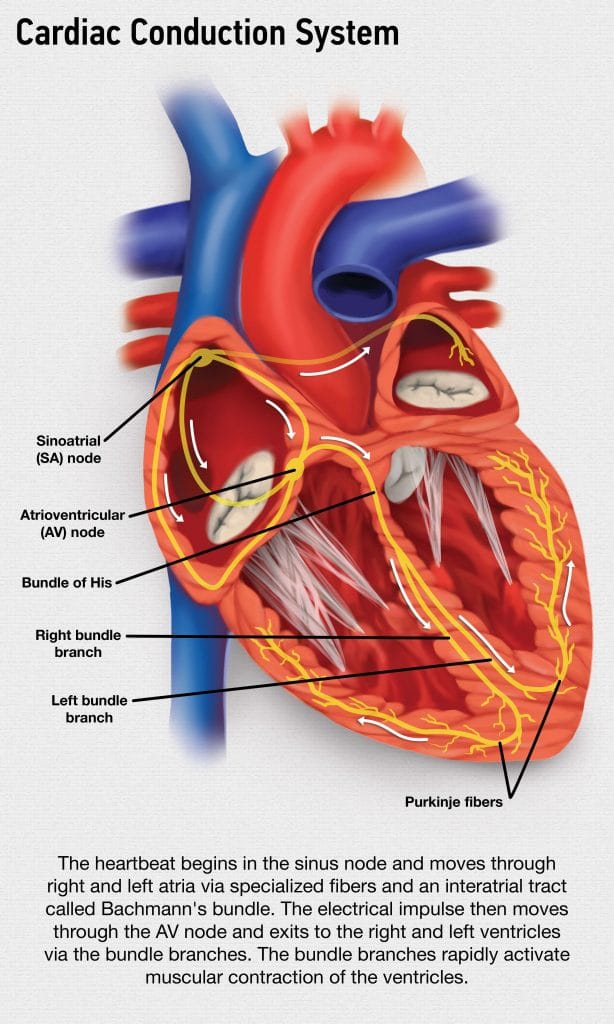The heart strikes many of us as one of the most mysterious parts of our bodies. Not only does it seem to figure prominently as a metaphor for all matters romantic, but it’s central to our ability to live.
As a heart rhythm specialist, the education of my patients needs to be concise, clear, and compassionate. That last point is worth restating: education needs to be compassionate. It’s one thing to deliver someone the diagnosis of cancer. It’s another thing to deliver that diagnosis with empathy. We as health care providers need to always ask the question: how would I want my physician to educate me?
Life is a balance between order and chaos. The heart is no different – both literally and figuratively. Your heart is your body’s engine, which normally runs in working order under the authority of its electrical system. That’s pretty amazing when you stop to think about it for a minute. After all, the heart pulses approximately 108,000 beats every day.
The heartbeat starts in the sinus node, a group of electrical cells located in the upper portion of the right atrium, the top right chamber of the heart. Here, impulses then travel to the AV node. One can think of this structure as a “toll booth” which regulates impulses from the atria (top chambers) to the ventricles (bottom chambers). After the AV node, impulses split into the right bundle branch and left bundle branch, to activate the right and left ventricles, respectively. As these electrical impulses travel through the heart, they cause the heart muscle to contract and then relax. This completes one heartbeat. (Refer to the Cardiac Conduction System illustration)
However, when chaos strikes and the heart’s electrical system malfunctions, the result is an abnormal rhythm called cardiac arrhythmia.

Atrial fibrillation, or AFib, is the most common cardiac arrhythmia around the world. When it comes to the rhythm of the heart, and the rhythm of life, AFib is the very epitome of cardiac chaos.
Due to the gravity of the condition, it is crucial to institute early detection and early intervention approaches in halting and even reversing its progress. That’s why it is so important to arm yourself with as much information as possible, build a great health and support team around you, and take clear action to maintain control over your life’s course.
Education is Crucial when Living with AFib
In speaking with countless patients over the years and advising them on their journey in living with AFib, I have become more convinced than ever that widespread education is crucial to help patients and health professionals alike understand the latest treatments for AFib. It has become evident to me that most people were unaware of the fact that previously “untreatable” patients, those with long-standing persistent AFib, for example, can now have therapeutic options available to them.
As a cardiac electrophysiologist, sometimes referred to as an electrocardiologist, one of the most important lessons I have learned is that you must treat the whole person to truly be successful in atrial fibrillation management. That means identifying and reducing all triggers. These include but are not limited to alcohol, caffeine, stress, dehydration, and electrolyte balance. Managing these triggers is a highly effective way of learning how to thrive with AFib and how to stop an AFib episode. Equally important, identification and treatment of all modifiable risk factors is crucial. These include sleep apnea, obesity, high blood pressure, diabetes, coronary artery disease, and valvular heart disease.
To learn more about the heart’s electrical system including arrhythmias such as AFib, and how to improve your heart health, visit draseemdesai.com. To be informed, prepared, and in control, check out this playbook to thriving with AFib.



